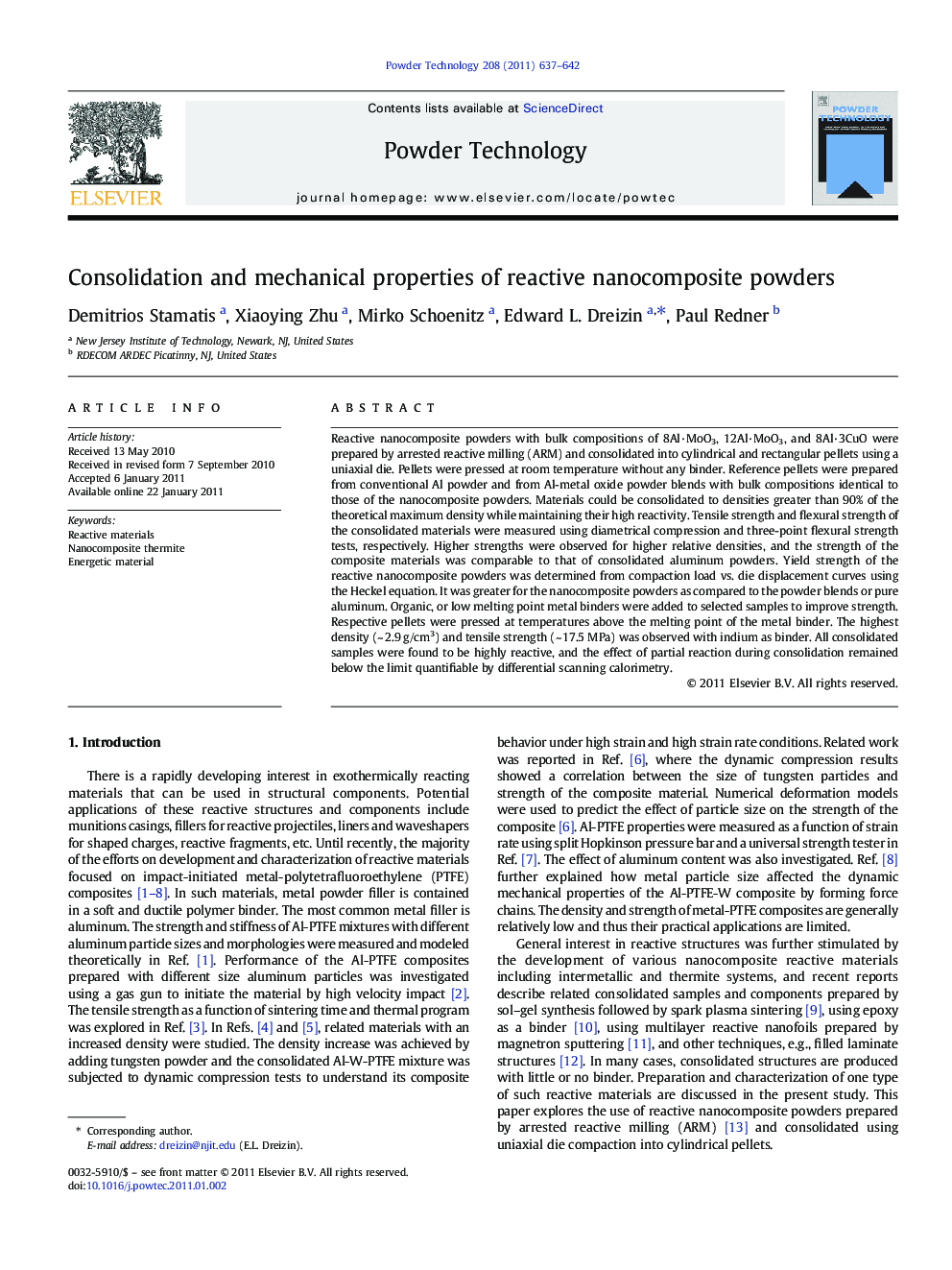| Article ID | Journal | Published Year | Pages | File Type |
|---|---|---|---|---|
| 237596 | Powder Technology | 2011 | 6 Pages |
Reactive nanocomposite powders with bulk compositions of 8Al·MoO3, 12Al·MoO3, and 8Al·3CuO were prepared by arrested reactive milling (ARM) and consolidated into cylindrical and rectangular pellets using a uniaxial die. Pellets were pressed at room temperature without any binder. Reference pellets were prepared from conventional Al powder and from Al-metal oxide powder blends with bulk compositions identical to those of the nanocomposite powders. Materials could be consolidated to densities greater than 90% of the theoretical maximum density while maintaining their high reactivity. Tensile strength and flexural strength of the consolidated materials were measured using diametrical compression and three-point flexural strength tests, respectively. Higher strengths were observed for higher relative densities, and the strength of the composite materials was comparable to that of consolidated aluminum powders. Yield strength of the reactive nanocomposite powders was determined from compaction load vs. die displacement curves using the Heckel equation. It was greater for the nanocomposite powders as compared to the powder blends or pure aluminum. Organic, or low melting point metal binders were added to selected samples to improve strength. Respective pellets were pressed at temperatures above the melting point of the metal binder. The highest density (~ 2.9 g/cm3) and tensile strength (~ 17.5 MPa) was observed with indium as binder. All consolidated samples were found to be highly reactive, and the effect of partial reaction during consolidation remained below the limit quantifiable by differential scanning calorimetry.
Graphical AbstractThe left figure below shows the measured flexure strength of consolidated aluminum powder and two nanocomposite powders for several densities. Higher compaction density results in higher flexure strength. The image on the right is of a cross-sectioned pellet showing the voids between the particles. The nanocomposite structure can be seen where the bright inclusions represent sub micron sized CuO embedded into an aluminum matrix.Figure optionsDownload full-size imageDownload as PowerPoint slideResearch Highlights► Reactive nanocomposite powders consolidated into pellets using a uniaxial die. ► Materials consolidated to densities greater than 90% of TMD. ► Consolidated materials maintained their high reactivity. ► Higher strengths were observed for higher relative densities. ► Strength of consolidated composites is close to that of consolidated aluminum powders.
